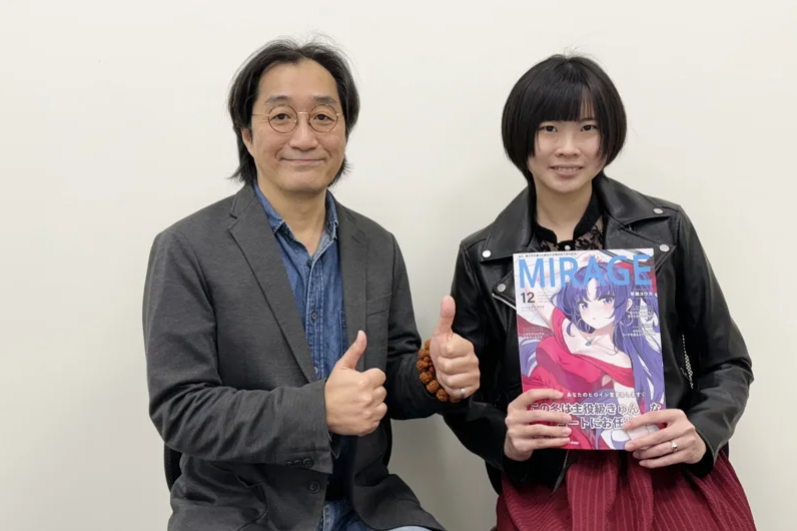Department of Multimedia Game Development and Applications Industry–Academia Collaboration: Students Take Part in Key Animation Production for Detective Conan
Hungkuang University’s Department of Multimedia Game Development and Applications Establishes “Animation Industry–Academia Collaboration Team”
Assistant Professor Wei-Ming Wang has led students over the past six months to participate in the key animation production of four Japanese animation projects. One of them, Detective Conan, was recently broadcast in Japan, and the name of junior student Hsin-Yu Fang appeared in the ending credits. Fang happily shared that she has learned many practical skills in action design through this experience.
Wang explained that in September of last year, he brought students from the Department of Multimedia Game Development and Applications to the AMPS International Animation School in Japan to enhance their animation techniques. Through his connections with professionals in the Japanese animation industry who were assembling a key animation production team, he established the “Animation Industry–Academia Collaboration Team” within the department in October. Under his guidance, students took part in collaborative projects. In addition to team leader Hsin-Yu Fang, the team also includes six other sophomore and freshman students.

The “Animation Industry–Academia Collaboration Team” Has Completed Four Projects
The “Animation Industry–Academia Collaboration Team” has already completed four collaborative projects, which will be released one after another. The names of other team members will also appear in the ending credits. Assistant Professor Wei-Ming Wang noted that Japan is a global hub of the animation industry, and through international industry–academia collaboration, students who are passionate about animation production can gain valuable hands-on experience, build a portfolio of works, and strengthen their prospects for future careers in the industry — achieving multiple benefits at once.
Student Hsin-Yu Fang pointed out that the biggest challenge in these collaborations was adapting to the different technical standards of various animation companies and learning the specialized animation terminology commonly used in Japan. Since all communication was conducted in Japanese, she often had to spend extra time preparing. Each company had its own workflow and requirements, meaning every project required her to quickly familiarize herself with new practices. This experience, she said, helped her develop strong communication skills when working with different companies.
Reflecting on her six months of experience, Fang said her greatest takeaway was learning the principles of action design in animation. Since one second of animated movement consists of 24 frames, she needed to design the dynamic actions for each cut in the storyboard based on the three-view character model sheets provided by the collaborating companies. She also had to ensure that each sequence transitioned smoothly between preceding and following cuts. Fang emphasized that these practical experiences would be invaluable for her future development in the animation field.

-
CTS News: https://reurl.cc/RLx0Vg
-
United Daily News (UDN): https://reurl.cc/962rzj
-
China Times: https://reurl.cc/yDzE7O
-
Broadcasting Corporation of China (BCC) News: https://reurl.cc/NbVrbm
-
Economic Daily News: https://reurl.cc/r3mb4y
-
Central News Agency (CNA): https://reurl.cc/A6okn8
-
Taiwan Hot News: https://reurl.cc/EgEn7k
-
Yahoo News: https://reurl.cc/NbVrr6
-
MSN News: https://reurl.cc/geKWzL
-
Fan News: https://reurl.cc/KdNAej
-
Taichung Daily: https://reurl.cc/jQL8r2
-
PChome Online News: https://reurl.cc/O590L3
-
Taiwan Times: https://reurl.cc/b30XjX
-
Owl News: https://reurl.cc/xpnGd5
-
Hot News Life: https://reurl.cc/047xXl
-
Life.tw: https://reurl.cc/kMDLQq
-
Yuan Feng Media: https://reurl.cc/aZ2NgX
-
Next Generation Discovery (NGD): https://reurl.cc/nqe5de




